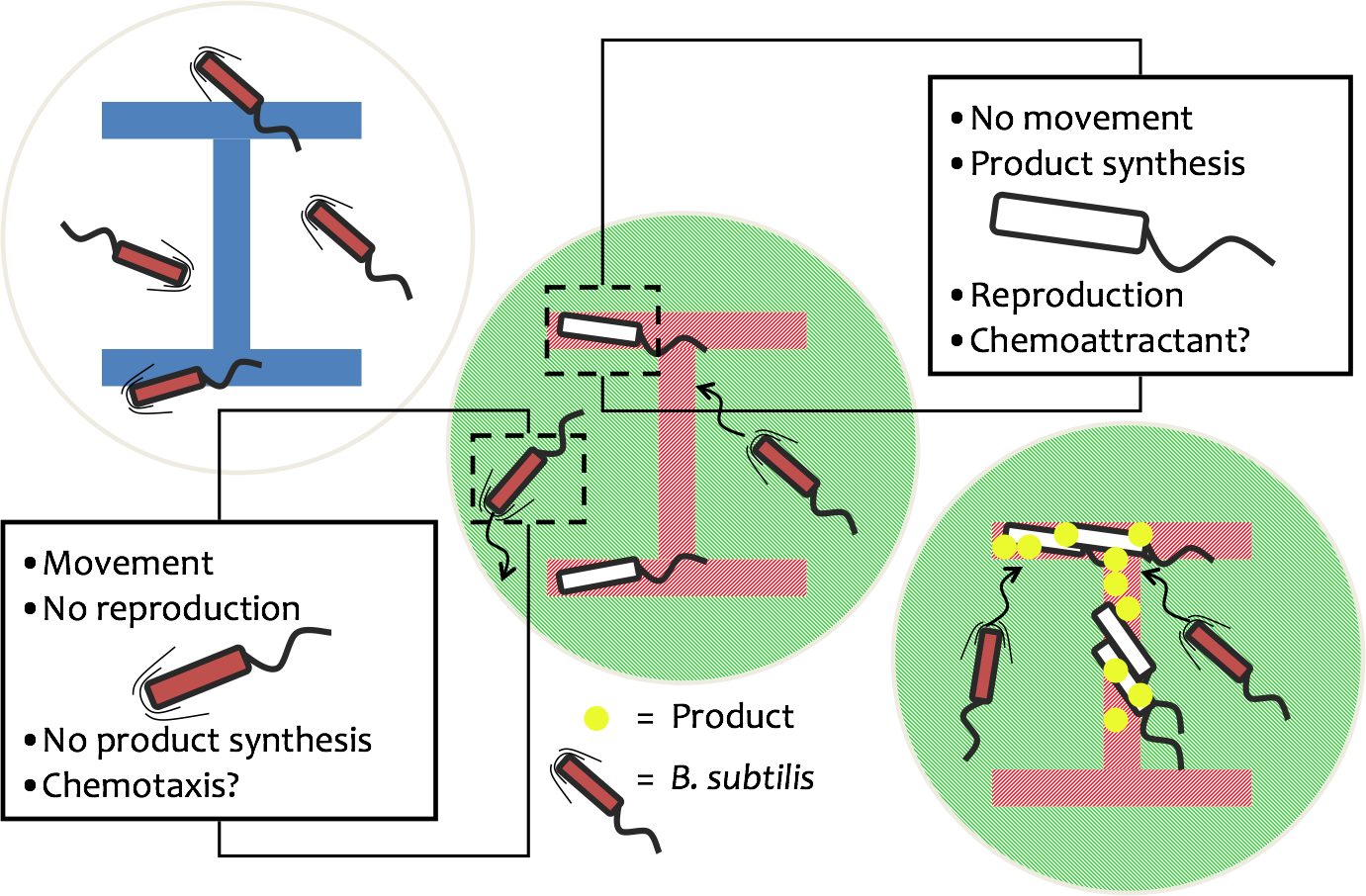
| This diagram gives a basic overview of how we intend our system to work. In the starting phase, B. subtilis are motile and are not producing our desired product - they swim freely in the medium. If we want to print a serif "I" shape of product, we shine light of the correct wavelength (red is used as an arbitrary example here) in the desired shape onto the plate.
Bacteria within this area will sense that light, and production of a clutch molecule (EpsE) will be triggered. This should disengage the flagella from the motor quite quickly, rendering the subtilis stationary - coupled with EpsE is a gene for expression of our desired product, so they will start producing it when in the area. We had considered also causing them to release a chemoattractant to bring in "reinforcements" and improve localisation, but this may be beyond the scope of our project.
Should any individuals stray from the correct area, the clutch should disengage and material synthesis should stop. Thus, we hope to build up material in the defined area only - the basis of our bioprinter.
|